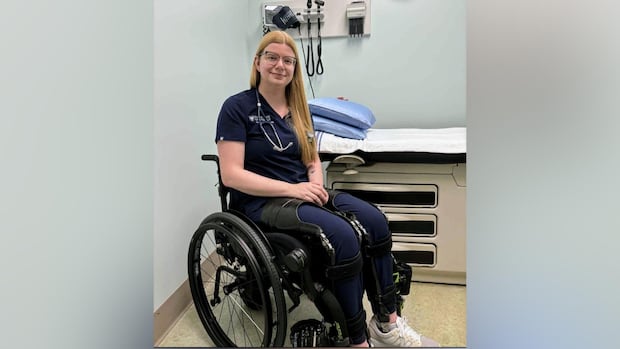London’s largest employer will need to make tough decisions as it continues to grapple with the fallout of years of instability, bloated management and growing need for medical care, a review of the organizational structure of the London Health Sciences Centre (LHSC) has found.
The review, done by an outside healthcare consultant at the request of provincially-appointed supervisor David Musyj, paints a bleak picture of the region’s largest hospital — an organization that lags behind similar centres in its use of technology, faces a $150 million operating deficit, and has been embroiled in scandal and “massive” leadership turnover in the last decade.
“LHSC is currently in a very difficult financial position and faces significant operating challenges every day. While all hospitals in Ontario are facing similar challenges, LHSC’s circumstances are particularly complex,” the consultant, BIG Healthcare, wrote in its report, which was released to staff earlier this week and includes 169 recommendations for how to improve the hospital’s finances in the next three years.
The report was not publicly released but a copy was obtained by CBC News. Hospital executives would not comment on the review because they’re still sharing the findings internally, a spokesperson wrote in an email.
The review was being done at the same time as a management restructuring, which “corrected excessive growth in management that has occurred at LHSC over the last four years,” the consultant wrote. That restructuring has seen the elimination of 74 management positions, and 71 leaders being reassigned. It resulted in a $14M savings.
London Health Sciences Centre’s interim president and CEO David Musyj said that $14 million in savings from eliminating 59 position and reassigning 71 others will be reinvested into patient care.
In the last decade, the report noted, the hospital, which includes Victoria and University hospitals, has had six different CEOs, six different CFOs, and 41 different executives. “Each new administration brought new structures, spending and priorities,” the consultant noted.
“The amount of service available in the region has not kept up with demand,” the report states. Continued population growth means there will be “overwhelming demand for services in the future,” but the hospital’s spaces are older and at capacity, with no room to grow or expand.
“LHSC feels ‘full’ all the time because more people than ever are relying on it for care and there are fewer places than in the past that take patients who no longer require the acute level care provided at LHSC. This will be an ongoing challenge,” the report states. “However, some of the difficult operating challenges LHSC faces are self-imposed: a result of its own choices and actions over the years.”
The hospital has hired a large number of people in the last four years, but “growth in staffing has been disproportionate to growth in service,” the report states, and has been done without coordination. “LHSC is using more staff and more hours of work to provide the same care peer hospitals do”
‘They’ve lost trust’
The hospital also doesn’t designate patients who no longer need acute care accurately, which has “masked the extent of the capacity and flow challenges,” that it faces, the report states. Efforts are underway to restart a relationship with St. Joseph’s Health Care so surgeries and other medical care can be delivered more efficiently.
Simplifying team structures, clarifying roles and expectations, reducing duplication and improving how work gets done will allow the hospital to provide more care without increasing staffing, the consultant said.
Some of the recommendations sound like plans from decades past that tried to make the hospital system more efficient, said Peter Bergmanis, head of the London Health Coalition, who has advocated for the health care system for more than three decades.
“It’s tinkering at the edges again. Ultimately, a lot of this is out of the hands of the hospital administration and we know that LHSC is just a part of a bigger picture of underfunding of healthcare,” he said. “We spent so much money in London 20 years ago to coordinate and re-organize and consolidate and amalgamate hospital staffing, and now here we are again.”
The hospital must do a capacity audit to see what the communities it serves needs, which will likely mean a demand for hundreds more beds, he added, which would boost moral of the staff. “They’ve lost all the trust. It’s unbelievably frustrating for the staff.”
The hospital’s dual responsibility as a major tertiary centre and a community hospital is unique, and it’s one of the biggest and most complex multi-site academic health centres in the province, the report states.
It also has a relatively young work force and hasn’t paid enough attention to financial performance, according to the report. “The organization is data rich but has been information poor with regards to management decision making,” the consultant wrote.
A look at some of the 169 recommendations
- Doctors need to work more closely with administrators to review clinical results
- Individual doctors’ admission rates and average length-of-stay should be monitored and reported
- Pause current spending on leadership development
- Review policies on the use of expensive drugs for rare diseases, with a focus on “optimizing patient access to those medications outside of the regular hospital drug budget”
- Have explicit discharge targets so most patients are discharged before noon, and include medical imaging (for example x-rays, ultra sounds or MRIs) in discharge planning
- Increase the number of patients that can be discharged to their own homes, and analyze why people are getting readmitted because LHSC has a high readmission rate
- All psychiatric admissions should have a care plan with an estimated date of discharge
- Mental health services should be 24/7 so patients admitted on weekends are seen by a psychiatrist. Call discharged mental health patients within 48 hours for a follow-up
- Stop investing and maintaining buildings that are not operationally active
- Create a surgical short-stay unit for people who have admissions that are less than 36 hours, and do more same-day surgeries so people with less than 24 hours in hospital don’t have to be admitted
- Partner with long-term care homes so residents don’t have to go to the emergency room, and leverage family medicine clinics to provide care for people without a family doctor who were see in in the ER
- Work to recover costs for non-OHIP funded births and switch to translation technology instead of in-person translation services in the birthing centre
- Re-evaluate the amount of service purchased in housekeeping and security to reduce costs
London Morning8:17Here’s how LHSC’s new CEO plans to tackle the organization’s $150-million deficit
The region’s largest hospital is projecting a $150-million deficit next year, nearly double this year’s $78-million deficit. London Health Sciences Centre’s new CEO, David Musyj, joined London Morning to outline how he plans to get the books back into the black.







